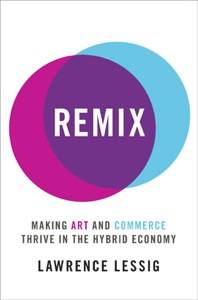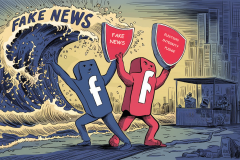A few weeks ago a company I work with lost an amazing opportunity. We gave them the idea to create one of the best brand blogs I’ve ever seen.

They said no. Instead, they decided to create a social media strategy that was boring and dictated by legalities. Just imagine a blog that doesn’t allow customer comments. The campaign not only offered zero value to customers, but in the end it ignored them by turning the blog into a press release platform. Ultimately, the brand decided to trash the project and walk away from social media.
This is guest post was written by Samir Balwani, an emerging technologies strategist at Morpheus Media. You can follow him on Twitter
The biggest reason most social media marketing campaigns fail is fear – fear of jumping into something new and trying a social media marketing strategy.
Social media marketing doesn’t always guarantee short-term results, could be risky and doesn’t always work. But what most brands don’t realize is that doing nothing may be even riskier.
Engaging consumers online requires a brand to stop worrying and become personable. The scenario where a brand image is forever ruined is such an anomaly that brands need not worry. The act of interacting with a customer inherently humanizes the brand, which protects it from potentially brand-shattering backlashes. Consumers are more likely to support and champion a brand that they feel connected to.
Remember Motrin? Didn’t Thinks So
Even the most well-known social gaffes are quickly forgotten. For example, Motrin’s controversial YouTube ad caused little long-term brand damage.
The Motrin story starts with the release of what many mothers considered a controversial ad. When a number of mothers on Twitter found it offensive, Motrin responded quickly, removed the ad, and posted an apology. Shortly after an apology was posted, Motrin consumers stopped caring about the marketing mistake. They recognized that someone made a mistake, and the story blew over.
Although mistakes occur, the effects can be controlled with an understanding of online PR and proper online reputation management. The average consumers won’t find a marketing failure unless they specifically search for it. A Google search for Motrin on Jan. 11, 2010 returned only Motrin product information for the first eight results. The 9th position is the actual commercial. However, even that can be remedied with online reputation management. Realizing that smart brands can engage in social media marketing with minimal risk can help overcome the fear of backlash.
In a digital world where consumers have a low attention span and news moves quickly, the fear of permanently ruining a brand by engaging online need not be entertained. At most, a brand will experience short-lived obstacles and minor backlashes as it grows to understand how to engage online.
The fear of error is a natural one, but it’s not the only one that can cause a brand’s social media marketing campaign to fail. Most brands tend to also be afraid of losing control over their image.
It’s ironic that most companies are afraid to trust their consumers but expect their customers to trust them.
Define a Brand With the Push of a Button
Instead of realizing the truth that consumers are already talking about brands and republishing brand asset (remixing, as Lawrence Lessig would say), most brands act as if they can still exert control over what their consumers know and see.

Consumers no longer need the brand for information. Any semblance of brand control was lost when each consumer became the equivalent of a newspaper. Blogs, twitter and product reviews have enabled consumers to define a brand with the push of a button.
When a customer writes about their horrible experience, a brand should be afraid of leaving that comment unanswered. However, most brands fear interacting with their consumers one-on-one.
Restaurant owners, because of their huge dependence on word-of-mouth marketing, are one of the best examples of great customer interaction. They realize that a single unhappy customer can mean the loss of potentially 10 patrons. If a manager sees someone that isn’t happy, more often than not he’ll find a way to make the consumer have a better experience. Similarly for a brand, the Internet has evolved beyond simple advertising to one that is dominated by word of mouth marketing. Fear of interacting with consumers means foregoing this potentially lucrative avenue of marketing.
A smart social brand would forego any fears of losing total control and embrace the idea of pull marketing, opening itself to attracting new customers through innovation and distinctiveness. Fear is what makes a business average.
Testing, Experimenting, Trying
The best way to allay a brand’s concerns is through knowledge. Nothing is a better teacher than testing, experimenting, and trying. Trying social media marketing and interacting with consumers is the best way to learn.
However, the learning curve can be steep and not many are comfortable putting themselves at the mercy of their consumers. For some, an online department (with actual power and resources) that can dedicate themselves to learning and gathering data is a viable solution. For others, a consultant or coach may offer meaningful insights on what to do and, more importantly, what not to do.
Knowledge isn’t the only way to overcome fear; conviction helps one rise to the challenge. A brand that is sincerely dedicated to interacting online will find a way to make it work. When C-class executives show interest by allocating resources and making social media a priority, managers become less afraid of failure. Social media marketing requires a company-wide culture shift that works best when inspired from the top down.
By overcoming the fear that brands have, they can dedicate themselves to a social strategy instead of faltering between broadcast models and consumer interactions. Until a brand embraces a social culture of transparency, instead of one of guarded marketing speech, it is doomed to being a digital pariah.
Photo by Flickr user Tiago Ribeiro.
.










